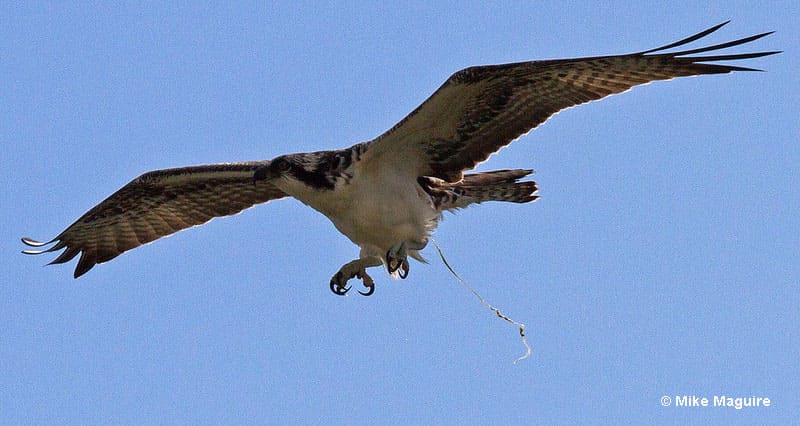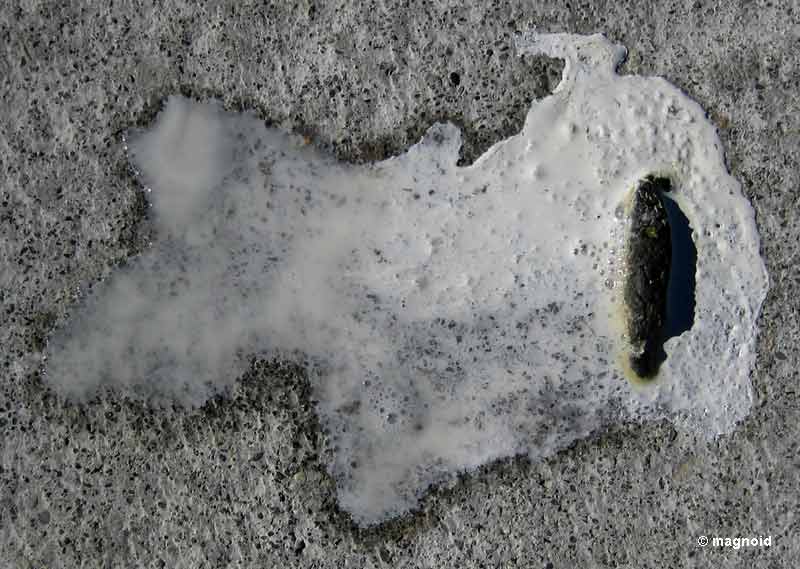
Time to confess. I am not a superstitious person. Still, every time I get hit by bird poop, I take comfort in the fact that it is believed to bring good luck.
Apart from cleaning up, there is nothing else you can do to make yourself feel better about it anyway.
But what about bird pee?
If their Number Two holds that much power (even if only imagined!), the Number One probably also compares. How do birds pee, and should you consider yourself lucky if the bird accidentally lands a few drops on you?
Well, it turns out it’s the same.
Except for a couple of odd exceptions, birds do not urinate. The trademark runny bird droppings also include their version of pee – an all-in-one excrement. Or, as this fabulous BBC article puts it, “Birds do Number Threes.”
Come on a peculiar journey with me to discover the bird toilet habits (only without the toilet – because bird toilet is everywhere).
On this page
Do Birds Pee?
As hinted in the introduction, birds do not pee or urinate – except for two ratites, the Ostrich and the American Rhea. Instead, the liquid and the solid waste from the bird’s body are combined into one mass – the bird dropping. Also, unlike us, the excrement is expelled through a single opening – the cloaca.

However, birds nevertheless produce urine, but they eliminate it differently due to disticntive excretory system. While mammals produce urea as a primary liquid waste component, birds have uric acid. It is a white, runny, paste-like substance that constitutes the whitish part of the bird dropping.
Do Birds Have Bladders?
One of the distinctions of avian excretory systems is that, except in ostriches, there is no urinary bladder. Instead, birds have evolved a streamlined system for excrement storage and expulsion.
The main organs of the avian excretory system are the kidneys, the ureter, and the cloaca.

Image credit: Osprey Tales
Like mammals, birds have two kidneys. Each one has a canal – ureter – that empties right into the cloaca without any intermediary organ. But unlike mammals, which store urine in the bladder until it’s convenient to eliminate, birds are more direct about it.
In other words, our avian friends can’t hold it in (which explains a lot).
Why do birds lack the bladder?
Having no bladder filled with liquid to weigh you down is an excellent advantage if you want to be able to fly.
This efficient design allows birds to maintain a lightweight body for flight, as they don’t need to carry the additional weight of a bladder filled with urine. Instead, their excretion process ensures a swift and simultaneous elimination of both solid and liquid components when needed.
Also, the land-based mammals do not want to leave a trail of urine behind them as they move – that would be like a neon sign helping predators to find them.
They empty their bladder only periodically and away from their lairs and trails. On the other hand, birds don’t need to take those precautionary measures because they spend much of their time airborne and can simply fly away from the danger.
Does Ostrich have a bladder?
Of course, the great oddball of the avian world – the Ostrich – and his partner for this occasion, the American Rhea, had to add some confusion.
These two primitive, flightless birds have modified cloacal segments (the last part, proctodeum) that can hold urine – a rough equivalent of the mammalian bladder. Thus, they poop and pee separately. Still, we can often observe ostriches urinating and then defecating afterward, nearly at the same time.
How Is Bird Urine Created?
The kidneys act like blood filters, eliminating excessive and waste compounds. A large portion of these are nitrogen-based chemicals. Bird kidneys turn them into uric acid.
Forming uric acid instead of urea is a water-saving strategy. Because uric acid is less toxic, birds can produce concentrated urine that’s not much diluted. Part of the uric acid leaves the body in the form of uric acid crystals.
The urine then travels from the kidneys through small tubes called ureters to the cloaca. The cloaca is the terminal point for the digestive, reproductive, and urinary systems.
Here, specialized chambers within the cloaca ensure that the dropping is directed appropriately during elimination – because no bird wants to soil itself (your car is another story).
How Do Birds Poop?
As said before, birds have a single opening called the cloaca, which serves as the exit point for feces and urine but also for reproduction (mating and egg-laying). This greatly simplifies waste elimination because bird waste is an all-in-one package.
The actual bird feces come from the digestive tract. It is the dark portion of the bird dropping, slightly harder than the “urine” component.
The Anatomy Of Cloacas
The fact that cloaca is a simplified all-in-one system for handling digestive waste and reproduction doesn’t mean it is not complex in its own way.
Read more: The Anatomy of Birds
Despite being a pretty straightforward organ, the bird cloaca has three distinct sections, each serving a different purpose.
- Coprodeum. This section receives waste materials from the colon. The feces, the darker component of bird droppings, is formed here.
- Urodeum: The urodeum receives the liquid waste (uric acid) from the urinary system – the ureters or, in Ostrich’s case, the bladder. Then, the uric acid is mixed with feces in the cloaca. Also, the reproductive tract opens into the urodeum.
- Proctodeum: The proctodeum is the cloaca’s final part, where solid and liquid wastes are expelled through a single opening, the (cloacal) vent.
Frequently Asked Questions
Do birds pee and poop separately?
No – almost all birds eliminate both urine and feces through the cloaca simultaneously in the form of one dropping. The rare exceptions are some ratites – ostriches and American rheas. A part of their cloaca is modified as a bladder, so they urinate and defecate separately.
What is a bird’s poop called?
Bird excrement is commonly referred to as “droppings” or “bird poop.” Dried-up accumulations of bird droppings occurring below their colonies are called the “guano.”
What do bird excrements look like?
Bird excrement looks like a semi-solid, runny paste. It has a “fecal” component, which is dark in coloration. The exact hue can vary depending on what the bird ate. For example, in the cherry and mulberry season, crow and pigeon poop will often be purplish. Birds who eat greens will have dark green feces.
The second part of bird excrement is the “pee” portion, white or light yellowish. The harder part is made of uric acid crystals, while the liquid component is the uncrystallized uric acid.
Can birds feel when they poop?
Birds don’t have the same sensory nerves in their cloaca as mammals do in their rectums. As a result, birds likely do not feel the sensation of eliminating waste in the same way mammals do. Still, they can definitely feel it’s coming, and they have an awareness of defecating.
As an obvious proof, birds will raise their tails or posture otherwise before defecating to help direct their excrement.
How many times a day does a bird poop?
The frequency of bird pooping depends on several factors, such as the bird’s size, metabolic rate, and diet. The average number of bird poopy times is around 50 per day. Generally, smaller birds may poop more frequently, while larger birds often have less frequent but larger droppings. Some small birds can poop every 15-20 minutes, which is almost 100 per day. Pigeons poop around 30 times per day.
Can we use bird droppings?
Organic and traditional farmers still regularly use bird droppings from chickens, pigeons, and seabirds – usually the guano – as a nitrogen-rich fertilizer. The guano needs to be either dissolved in water or composted before use because it is so concentrated.
However, there have been more exotic uses of bird poop throughout history. In ancient Korea, bird droppings were used for dye removal. Even more oddly, in old-time Japan, the Geishas used nightingale droppings to create facial masks, helping their skin recover from aggressive makeup.
Last but not least, bird poop is used as an indicator of bird health. For example, runny and light green poop can mean a sick feathery pet.
Conclusion
I hope that the question “Do birds pee?” now has a clear answer and that no remaining dilemmas are as murky as a bird dropping.
The fact that birds poop and pee all in one go is the responsibility of the unique avian anatomy. The efficient waste elimination process is tailored to support their life in the skies and the fast metabolism such a lifestyle requires. Still, the always-quirky Ostrich is there to bend all the rules – and be a real-life avian I.P. Freely.
